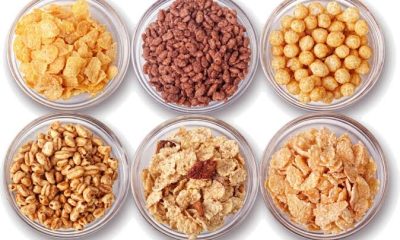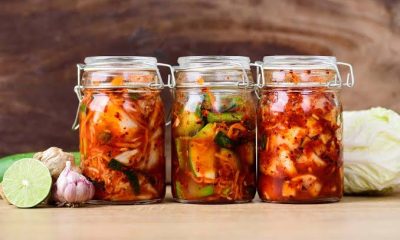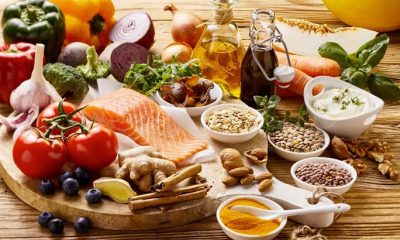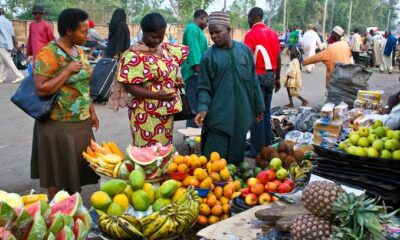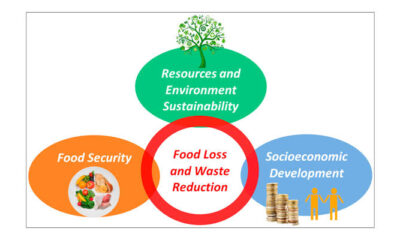Food Security
WORLD FOOD DAY 16TH OCT. FOOD ENCYCLOPEDIA – AFRICAN EXPERIENCE “

…..@WufasAgronet, we are Food Security ( processing ) Advocates.
✅Earned FAO , WFP(WA), Top Fan barges.
✅Member NAAJ, PAAJ, IFAJ & AFAN.
✅Consultancy Services in Human Capital and Value Chain Development.
CAN AFRICA (indeed) THE WORLD AFFORD TO FEED HER CITIZENRY BY 2030 IN THE OPTICS OF THE “TRIPPLE A” OF SUSTAINABLE FOOD SECURITY AND VALUE CHAIN DEVELOPMENT ?
It’s on record that WUFAS AGR0NET Coined the phrase “TRIPPLE A” of Sustainable Food Security and Value Chain Development to describe the need to make available good quality food for all.
The followings are the various classes of Foods :
– • Beverages, • Dairy products, •Baking and pastries, • Fruits and vegetables, • Legumes , • Cereals Technology, •Tuber roots Milling, • Oil extraction, • Beef management , • Poultry, •Fisheries, • Distillate etc .
Actualisation of the Triple A is pivotal to achieving the Sustainable Food Security and Value Chain development in the ongoing agricultural reorientation in Nigeria which is one of the goals from the optics of the 17 goals of 2030 UN agenda. The Tripple A are of enormous importance that each must be accomplished on own merits. They are
— AVAILABILITY — MASSIVE / Aggressive commercial Organic Agricultural production ( Mechanisation )
— ACCEPTABILITY — Processing with adequate Food Processing Technology knowledge to meet – International Best Practices and global Competitiveness.
— AFFORDABILITY — Relatively cheap for all to buy.
Sustainable food for the citizenry.
■ AVAILABILITY OF AGRICULTURAL PRODUCE :
The entire population of West Africa is about 350million while Nigeria is over 211 million with growth rate of 3.2% (about 6million annually ) . Producing enough Food for Nigeria is a mirage while the entire populace of W/ Africa subregion are import dependent on most of the daily needed food items such as Rice, Maize, Sugar, Milk etc. Nigeria is blessed with abundant landmass of about 98.3million hectares of fertile arable land that yields about 8 – 11 tons per hectare. 71% of the landmass are cultivatable while about 38% are cultivated.
In Asia, the Yeild per hectare is about 21MT per hectare this may not be unconnected with their agronomy techniques and practices.
POSTHARVEST LOSSES
In Africa , about 40% of the agricultural produce is lost annually due to • Lack of On-the farm Processing, • Inadequate storage facilities, • Infrastructural deficit in rural areas eg good feeder roads network, Electricity and • lack of adequate knowledge in Food Processing Technology.
A recent report from the Comprehensive Africa Agricultural Development Programme CAADP -Coordinator at Africa Union (AU ) commission stated that about 1.3bn MT ie 30% of global Food produce is lost annually due to Post HARVEST relate issues.
SOLUTIONS
In Africa especially Nigeria , adequate knowledge in fundermentals of Food Processing Technology must be embraced Starting from basics of water treatment, packaging, preservation, Quality control concept, Food mgt System , Storage systems etc. Followed by Unit Operational appliances such as Mixing, Pasteurization, Filtration, Centrifugation etc and then followed by simple practical demonstrations in various classes of Foods eg Beverages, Dairy products, Cereals Technology , enhancing Global Competitiveness and International Best Practices .
All these are what we stand for @ WUFAS AGR0NET.
SOME FOOD CROPS .
●RICE — An unprecedented leap was effected and achieved by the current administration of President Buhari in Rice production through the anchor borrowers schemes of the Central Bank of Nigeria .Nigeria now produce about 57% of the required 6.7mmt making Nigeria the highest producer of the Asian’s Food crop in Africa thereby stemming Rice smuggling.
● CASSAVA- Over 90% of various Industrial VALUE CHAINS of cassava are imported . ( such as ):
•Ethanol, • High quality cassava flour HQCF , • Cassava flour an adjunct in wheat flour Milling , •Sweetener enzymatic Hydrolysis of Cassava etc. While for domestic consumption we have ●Garri , ● Starch, ● Tapioca, ● Cassava flour, ● Animal feeds etc. — Vitamin A Cassava (yellow cassava, code 07/0593,TME 419. Vit A enriched cassava contains high level of beta -carotene a precursor of Vitamins A ) in consumption, it produces over 500 calories of energy daily. Making it important Food Security crop.
Cassava contains about 80% carbohydrate if not properly complemented with other nutrients, it’s excessive consumption may result in impaired vision or blindness and other terminal sicknesses. is a perishable Food crops if not Processed early enough.
Taking a case study of Cassava high net worth value chains, 96%of 600,000mt of Cassava flour , 100% of 200,000 Mt of Sweetner, 98% of 50,400Mt of High Quality Cassava Flour (HQCF),98% of Ethanol are imported annually.
● Sorghum – (Guinea Corn ) is a valuable source of Carbohydrate for man, livestock and lndustries it’s protein content is richer than that found in Maize but lower in soluble carbohydrate, oils and mineral matters.
Protein — 14.28%, Carbohydrate 76% and Oil 32%.
The Protein is lower in Biological value it’s deficient in tryptophan and Lysine but richer in Iron, the bran is rich in Vit B.
Nutritional and Industrial benefits : – It’s a staple Food in the Northern part of Nigeria a major contributor of energy in diets. Industrially it is of a high net worth value exploiting the abundance carbohydrate for Hydrolysis into simpler sugars.
In Cadbury Nigeria Plc , the polysaccharide in Sorghum is converted into Glucose syrup while the Breweries use it as an adjunct to malted barley for beer Brewing . The local Brewers use Sorghum as main source of raw materials.
NIGERIA import about 80% of Glucose annually.
● Maize – has multiple usages eg as main ingredient about 60% for Poultry feeds, 26% for Food (flour millers ) and Beverages manufacturing, Modified Corn starch /flour used for Custard production and extensively as filler or stabilizer in food Industries is 100% imported .
Nigeria produces about 10.5 MMT annually while demand is about 15MMT.
●– Legumes — PULSES are important in the diet of developing countries. They share similar characteristics eg
— Relatively high protein content generally between 18 -27% but Soybeans has exceptionally high biologically aproved protein content of 40%. Making Legumes important in human nutrition .
— High fat content useful source of Vegetable oil eg Groundnut Oil, Melon oil etc.
— High Carbohydrate content ie high calorific effect.
— Valuable source of minerals eg Calcium and Iron.
— Can contribute useful amount of Vitamins A, B and B2 and nicotine to diet.
— However, some toxic substances such as glucosides, purine and haemoglutinines all these are removed by soaking and cooking so may not occur in prepared dishes.
Other Legumes are Locust beans, Soya beans, Groundnut, Pigeon beans etc.
● SOYBEANS -Harnessing the nutritional and Industrial benefits of Soybeans as Food, Edible oil, Fibre and Fuel for National development cannot be over emphasised. Lack of massive and commercial agricultural production and Processing of Soybeans is a critical agro infrastructural deficit considering the humongous economic advantages of the various value chain developments. In ’19/’20 marketing year USA exported about 45MMT (USSOY) while in 2019 Brazil exported about $32bn of Soybeans ( about the same time Nigeria annual budget was $35bn) although Brazil is economically stronger in Sugar and automobile production. In Nigeria, incidentally Soybeans agriculture thrives best in the Geninea Savanna ( Benue throve ) / The Rain forest ecological zones of Nigeria. Nutritionally, a large percentage of the world’s population today is undernourished due to Inadequate diet Principal of which are protein, vitamins and minerals which are abundant in Soybeans.
Edible oil can be sourced from Soybeans that meets the regulated amount of Oleic content ( C17H33CooH, 9- Octadecanoic )which is trans fats free.
Fibre – are essentially the powder used mainly in Food Processing industries as thickener etc.
Fuel – Soybeans Bio Diesel for auto mobiles as renewable clean burning disel.
● SESAME SEEDS (BENNE )
For edible oil extraction. The value chain attracts enormous economic and commercial importance containing about 55% oils, 35%protein with substantial amount of carbohydrates and others. Of particular interest is the high quality oil obtain from Sesame which contains about 47% Oleic and 39% linoleic acid which exclude trans fats. Best in the production of margarine in many parts of the world with Inadequate refrigeration. Other uses are for Paints, Soap, Cosmetics, Perfumes, Bath oil,Pharmaceutical etc.
● ANIMAL HUSBANDRY in the West Africa’s climes. Animals are reared for beef purposes with no export value – (The average weight of cow here is about 250kg compared to 900kg obtained in Netherlands and other Beef exporting countries . ) while the dairy industry is still at infancy with no export value neither. Animal husbandry in West Africa is still as it was in the 18th century medeaver era trekking thousands of miles with no nourishing Food. Ranching is the modern practice worldover.
● FISHERIES —
There are about 264 dams some for multipurpose usage, Nigeria is blessed with extensive costal and brackish waters while Inland rivers and lakes are enormous also in place are 11 River Basin Development Authorities for irrigation purposes, Construction of dams amongst others but all are poorly funded and managed , all these are grossly under utilised for fishing activities.
However, private enterprise in Fish farming using garden “GALVANISED Mobile TARPAULINPONDS ” , Earth ponds etc are springing up.
Nigeria import about 900,000mt of Fish annually while the required is 1.5MMT . If GLOBAL production of marine and fresh water Food is increased by 15.5mt annually, some micronutrients deficiencies could be averted.
● FRUITS and VEGETABLES — ( HORTICULTURAL CROPS ) Nigeria is endowed with abundant landmass of about 98.3m hectare with about 71.2m hectare cultivatable while only 38% cultivated. The landmass are arable fertile land that supports various types of fruits and vegetables in the ecological zones from the Sahel Savanna through Sudan Savanna, Guinea Savanna, Mountain Grassland Rainforest , Freshwater Swamp Forest to Mangrove Swamp Forest ecological zones of Nigeria but about 40%are wasted annually due to Lack of rural access feeder roads network. to urban metropolis where the market exist.
● POULTRY INDUSTRIES are very adaptable to our climate in Nigeria the albatross is the Inadequate supply of Feeds of which about 60% is of Maize formulation. Maize importation is crucial for sustainace of the industry.
● WHEAT — From available statistics, about 4.5 million metric tons – 70% of wheat is imported annually while 30% is locally sourced from 8 States of: Kano, Jigawa, kebbi,katsina, Sokoto, Bauchi, Kaduna and Zamfara which are hotbed of Banditry and Insecurity.
Currently, Urban metropolis in Nigeria depend on wheat importation given various value chains such as wheat flour for Baking and pastries, Noodles, Semolina, Pasta etc school children are obsessed with noodles for Food packs . While Rice, Maize, Cassava Legumes etc are out of reach of many families.
— The exchange rate of Dollar to Ñairais $1 – 525 Naira respectively a bag of flour that used to cost less than 10, 000 Naira currently sold at 21,500 Naira , Wheat imported are mostly inferior and poor quality some are expired due to lower cost prices.
• The Central Bank of Nigeria in August 2021 claimed that Food import gulped about $1.04billion in six months.
From the above analysis the major alibi for insufficiency are insecurity, inadequate massive commercial agricultural productivity if this is stepped up the present more than 88 million people leaving in extreme poverty will be gainfully employed. China redeemed 725 million of her citizen from extreme poverty through massive construction , between 1990 – 2013. Indian was delisted from being the poorest nation in the world through the development of technologies in ICT, Nuclear, Agriculture etc. The time for Nigeria to strategize on definite policy objective to take advantage of efficient trade policy that will open up the vistas and vaccum in our balance of trade through our various untapped potentials such as massive commercial organic agricultural farming, various dairy value chain , fruit concentrates, local staple food stuff .productivities is now.
Important remedies to the above are addressing the insecurity which will allow the farmers go back to farms.
—– AGGRESSIVE/COMMERCIAL- ORGANIC MECHANISATION,
THE standard for agricultural mechanisation world over is 300 tractors to 1000 km of farmland , in Nigeria less than 50 tractors is deployed to 1000 kms, Nigeria presently need about 750,000 tractors to be deployed. Other areas such as scientific research and innovation on high yield crops varieties, Africa is the highest producer of cassava 55% but the yield per hectare is very low 8 – 11MT compared to the yield in Asia 21 MT/ hectares. appropriate fertilizer application, provision of government infrastructures such as roads in the rural areas and others such as weed management control, accessibility of loans to farmers at single digit rates, synergy between policy makers and scientist, industrialists and other stake holders like processors, famers,end users and donor agencies.
Presently, Nigeria is the highest producer of Yam 62% but to date the cultivation of the food tuber is manual if mechanised the foreign exchange It will attract Will be enormous.
The Federal authorities should synergize with large famers to provide needed support in areas such as mechanisation, massive commercial production in all areas as fruits, cereals, diaries, as these will influence large production of concentrate, Diaries and lot more. The irony of massive productivity is such that it doesn’t take any more energy to create big dream than it does to create little ones.there must be Swift departure from our native syndrome ( as our fathers did it) to advance thinking and operations. Investment in vital areas is key and should be embraced .The difference between the advance climes and the rest of the world is the bigger dream they have.
■ ACCEPTABILITY — PROCESSED FOODS :
Post harvest handling is the bane of Agricultural produce in Nigeria, about 40% is wasted due to lack of adequate knowledge in Food Processing Technology amongst others.
WUFAS AGR0Net Ethics of Food processing Technology which entails : Water treatment, Quality control concept, Preservation, Packaging,, Product Quality Assurance etc.these model would ensure acceptable food for all and support quality population.
At WUFAS AGRONET we are into establishment, Construction and installation of Micro, Small and Medium scale Food Processing Industries & Plants for Startups , Propreneurs, Enterpreneurs using about 80% local content ie( fabrication using stainless steel and other food grade appliances that are not toxic to food ) eg: Citrus fruits juices, Tomatoes (juice, paste) , pineapple line, Dairy ( different types- Greek, drinking, fruit, cottage cheese, sour cream, etc) Water Treatment and production, Flavor drinks ( still & carbonated) Alcoholic & nonalcoholic drinks, Herbal extracts , Bitters drinks, Wine drinks – Tonic wine, Bread baking/pastries, Chips Frying Milling -cassava, rice etc, Drying – fish etc, Compounding of Feed Mills. and many more plants.
● BANED FOOD ITEMS – Attention of the appropriate department of Agriculture (MYCOTOXICOLOGY) Is required on this development.
The European Union( EU) had in June 2015 suspended Nigerian Food items such as: Dryfish, Meat, Melon seed,Beans, Sesame seeds and Peanuts from entering Europe till June 2016, However the ban has been extended back – back to June 2019 following the inability to meet the prescribed food safety standards by the EU..The rejected Food items were found to contain between 0.03 — 4.6 mg/kg .of DICHLORVOS Pesticide. The permissible global limit is 0.01 mg/ kg. The excess chemical in the food items are said to be harmful to consumer’ s health.
Unfortunately, the high dosage of toxin is what Nigerians and indeed the W/Africa and beyond are been fed with. The appopriate authority should expedite necessary action on this.
● AT WUFAS AGRONET, The use of “OZONE ” (O3) is recommended in the grains Bin or Silos, the Ozone gas is driven by current of air through the base of the Silo upwards inhibiting all forms life eg Fungal, mould, insects etc USA Grains Checking Services Federal Administration approved Ozone gas safe as Antibacterial gas in cereals and Food products. Ozone react and breakdown the outer wax layers on bug’s bodies leading to dryness and death.
■ AFFORDABLITY:
The Principles of Supply and demand comes in. Cost of product is determine by the availability of same,When the supply is in excess of demand the cost drops, this trend followed by protective Government policies wil ensure affordability.Local producers will be encouraged to increase production .
As the processors operate at optimum capacity (full blast) break even point is achieved this will guarantee excess products and crash the selling price.
RECOMMENDATIONS.
TO FORESTALL THE INCESSANT BANNING OF NIGERIA’S FOOD ITEMS IN EUROPE AND ELSEWHERE THE USE OF “OZONE GAS” IS RECOMMENDED INSTEAD OF DICHLORVOS Pesticide.
At WUFAS AGR0Net, We are Competent and Reliable Food Processing Technologists into Human Capital Development Consultancy in Food Processing Technology enhancing Global Competitiveness and International Best Practices for the teeming youthful population and the unemployed graduates and other Food handlers through our AGROPRENUERIAL EMPOWERMENT DEMONSTRATIVE SEMINARS IN FOOD PROCESSING (Post harvest ). In line with UN SUSTAINABLE FOOD SECURITY AND VALUE CHAIN DEVELOPMENT .
Our Contact details :08157784430. Email wufasagronet@gmail.com, Fb pages WUFAS AGR0Net.
Food Security
CHARACTERISTICS OF GOOD DETERGENT

CHARACTERISTICS OF GOOD DETERGENT
www.wufasagronet.com
….. @WufasAgronet, we are Food Security (processing) Advocates.
✅Earned FAO, WFP, WORLD BANK, IFAD, IDA, IMF, UNSDGs, USAID, ROCKEFELLER FOUNDATIONS, BBC NEWS, JAGABAN ARMY, PUNCH NEWSPAPERS, GUARDIAN Newspapers, Today Reporters, Ripples News etc TopFan Barges.
✅Member NAAJ, PAAJ, IFAJ AND AFAN.
✅Consultancy Services in Human Capital and Value Chain Development in Food Processing technology.
DETERGENTS used for washing in industries should have the following characteristics.
-Ability to loosen organic matters eg. Soil etc. (organic dissolving power)
-Good rinsing power.
-Adequate wetting power to allow detergent to penetrate the deposit acting quickly and efficiently.
-Good sequestering power – removal of mineral deposits eg. Calcium, magnesium.
-Emulsifying power – fragmenting oil into tiny particles.
-Adequate germicidal power to sterilized dirty detergent solutions.
-Ability to dissolve alkali solutions precipitate of calcium and magnesium salt.
-It should not be corrosive.
-It should posses good buffering and saponifying powers.
The above characters may not be contained in a single detergent but if blended with others rich in some of the characters, a good result may be achieved.
MAJOR SOURCES OF DETERGENTS.
{Alkalis} – Caustic soda is the basic ingredient of detergent however,
there could be addition of other additives to give a property to the detergent. Other basic ingredients are Soda ash, Sodium silicate and others as seen above.
SEQUESTERING AGENT.
This is the action of polyphosphate in precipitation of calcium and magnesium salts in water creating additional wetting agent and polyphosphate to assist sequestration this would constitute most effective and economical clean-in-place detergent for brewing cleanings.
WETTING AGENT.
Known generally as synthetic detergent, Wetting agents are classified into 3 major types :An-ionic and Cat-ionic wetting agents.
The An-ionc type is commonly used for detergent formulation eg. Sulphated alcohols alkyl or aryl sulphonates. Non-ionic are mostly the polyethylonic oxide. On blending of both an ionic and catonic the result may be excessive foaming. It also processes good wetting, dispersing and rinsing power.
STERILISING AGENT.
Alkalis porcess sterilizing power, which increases with pH and temperature.
At WufasAgronet, we are competent and reliable Food Technologists into Human Capital and Value Chain Development Consultancy in Food Processing. Contact us email :wufasagronet@gmail.comPls go through the earlier sent documents.
Food Security
SEASONINGS. FLAVORS. FOOD INGREDIENTS.

✔Contact us @WufasAgronet for wide range of integrated flavors and seasonings, we are Manufacturers’ Representative.
…. @WufasAgronet we are Food Security (Processing) Advocates.
✅Earned FAO, WFP, WORLD BANK Group, UNSDGS, ROCKEFELLER FOUNDATIONS, BBC NEWS, JAGABAN ARMY, PUNCH NEWSPAPERS, GUARDIAN Newspapers, Today Reporters, Ripples News, etc TopFan Barges.
✅Member NAAJ, PAAJ, IFAJ & AFAN.
✅CONSULTANCY SERVICES IN HUMAN CAPITAL AND VALUE CHAIN DEVELOPMENT IN FOOD PROCESSING.
✔FLAVORS
BAKERY & PASTRY FLAVORS
*Vanilla flavor
*Condensed milk flavor
*Butter scotch flavor
*Enzyme chocolate flavor
*Enzyme butter flour
*Milk flavor
*Coconut flavor
✔ CONFECTIONERY & CANDY FLAVORS
*Strawberry flavor
*Chocolate flavor
*Orange flavor
*Butter vanilla flavor
*Banana flavor
*Mango flavor
*Lemon flavor
*Milk flavor
*Vanilla flavor
*Apple flavor
*Mixed berry flavor
*Coconut flavor
*Caramel flavor
*Honeydew flavor
*Condensed milk flavor
*Peanut flavor
*Cheese flavor
✔BEVERAGE FLAVORS
*Apple flavor
*Coconut flavor
*Caramel flavor
*Mango flavor
*Lemon flavor
*Banana flavor
*Pineapple Flavor
*Orange flavor *Strawberry flavor
*Natural Ginger flavor
*Malta flavor
*Grape flavor
*Raspberry flavor
✔ENCAPSULATED FLAVORS
*Strawberry flavor
*Raspberry flavor
*Mixed Berry flavor
*Orange flavor
*Apple flavor
*Banana flavor
✔BEVERAGES (CONCENTRATES, COMPOUNDS, BASES AND EMULSIONS) :
*Pineapple
*Lemon
*Ginger
*Cola
*Black currant
*Orange
*Strawberry
*Chapman
*Apple
*Banana
*Mixed fruit
*Cocopina
✔SAVOURY FLAVORS
*Beef flavor
*Chicken flavor
*Tomato flavor
*Cheese flavor
*Seafood flavor
*BBQ flavor
*Roasted flavor
*Smoked fish flavor
*Suya flavor
*Peanut flavor
*Roasted Chicken flavor
*Sardine flavor
*Smoke flavor
✔MILK POWDER :
*Fat filled milk powder
*Skimmed milk powder
*Full cream powder
*Flavored milk powder
*Butter milk powder
✔ICE-CREAM, YOGHURT & DAIRY FLAVORS :
*Yogurt flavor
*Vanilla flavor
*Strawberry flavor
*Banana flavor
*Mixed Berry flavor
*Chocolate flavor
*Cherry flavor
*Mango flavor
✔SEASONINGS:
FOOD SEASONINGS
*Beef seasoning
*Chicken seasoning
*Tomato seasoning
*Cheese seasoning
*BBQ Seasoning
*Seafood seasoning
*Noddles seasoning
*Pasta seasoning
*Jollof seasoning
✔SPICES :
*Cinnamon powder
*Onion powder
*Ginger powder
*Garlic powder
*Paprika powder
*Nutmeg powder
✔FOOD INGREDIENTS :
*Fat Replacer (Handisol – 25)
*Sweetener
✅OTHERS :
*Real meat reaction pastes
*Vegemeat for sausage roll
*Spice flavor oil
*Liquid and oil soluble flavor
*Soup and gravy mixes
*Ice cream premix
*BBQ sauce
*Tomato /Pizza sauce etc.
At WufasAgronet , we are competent and reliable Food Technologists into Human Capital and Value Chain Development Consultancy in Food Processing technology training the teeming youthful population including teirary institutions graduates in Global Competitiveness and International Best practices in Food Processing technology.
Contact email wufasagronet@gmail.com
Food Security
SECURITY PATHWAYS IN RELATION TO SUSTAINABLE FOOD SECURITY OF A NATION.

Good governance is predicated on ensuring the actualisation of the various security architecture of a Nation. The political barometer is also monitored through the efficiency of the security pathways which are :
INTERNAL SECURITY, INFORMATION/COMMUNICATION. , FOOD SECURITY, HEALTH ,EDUCATION, ELECTRICITY, TRANSPORTATION AND INDUSTRIAL GROWTH.
.
All the above are the essential security systems that can produce and provide QUALITY POPULATION through good and quality SUPERVISION
✅NATIONAL Security of life and properties is the (numero uno) number one responsibility of the Head of government be it President, Head of state and others. The mandate to secure life and property is paramount , they control and command the apparatus of security such as adequate Policing, effective Armed forces- Army for protection against external or internal aggression. Customs / Immigration for vigilant boarders patrol to prevent smuggling and immigration control amongst many others . Equipping them with weapons, Aircrafts, Vehicles, Boats etc.
For effective surveillance. In tackling the menace of bandits and kidnappers who have taken over the forest prohibiting farming activities . Armed Forest Guards / Rangers should be introduced.
INFORMATION/COMMUNICATION.
The entire world is in information age.
The constitution clearly stipulate that every person shall be entitled to freedom of expression, freedom to hold opinions and to receive as well as to impact ideas and information.
However, it is the opinion of this writer that freedom be guided with secured intent to prevent abuse that may result in conflicts and war through hateful and unguided utterances.
The most acceptable form of communication is such that promote humane, responsible and patriotic reportage upholding the concept of discipline and promoting values nationally and internationally.
A lot of opportunity mostly untapped abound for investment in Information and communication like Print, Electronic and ICT media.
For industrial growth, information through advertisement, publication and social media is vital for public awareness.
FOOD SECURITY
Whether one eat to live or live to eat is a matter of semantics the bottom – line is Food is the main sustainace of bodies and souls. The importance of food cannot be over emphasised . knowing this fact of life has made the developed world to appropriately plan for provision of quality food for their citizens. Provision of food is prioritize in their national agenda. It is on this note that the United Nation’s clarion call to others in the world to emulate the culture of Sustainable Food Security ensuring the Tripple A(s). of AVAILABILITY, ACCEPTABLITY and AFFORDABILITY. ( UN 2030 food security agenda) of good quality food for the underdeveloped countries who are import dependent on basic food items such as Rice, Sugar, Dairy , Beverages etc .
Presently, Nigeria is revolutionising agrioprenuerial activities, it’s hoped that the present policies on agriculture will not be Summersaulted. The Maputo declaration on allocation of minimum 10% of the country’s annual budget must go to agriculture. Food must be made a constitutional right for all. The authority must take time to support Micro and Small scale Agroprenuerails activities to adapt to climate change. Agroprenuerail activities is the surest way to lift hundreds of millions out of hunger, poverty, conflict and deaspiration.
HEALTH CARE
Health is wealth – Primary Health care delivery must be taken to the grassroot levels, while Rural Health care moblisation be made available and effective all must be well equipped with vaccines, drugs, consumables and other biologicals.
— Ensure maintenance of standard by private sector through effective monitoring.
— Tapping into Herbs Processing , local medical herbs be Researched into by National Institute of Pharmaceutical RnD. In Collaboration with Fed Mins. of Science and Technology.
— Integration of alternative medicine into health care.
— Health insurance scheme must be intensified on .
— Stemming of illegal importation of smuggled fake drugs and illegal drug manufacturing in the country.
EDUCATION
A Society, Community and Nation is as good as the percentage of her literary population. The various levels of education are Primary , Secondary and teriary education 6-3-3-4 .Education must attract appropriate budget at all time. Education is being administered by Public and Private participation at all levels. The special education must receive attention by provision of special equipment such as braille machine, audiometer etc.
ELECTRICITY
To the chagrin of the unsuspecting consumers and Contrary to claim of the generation companies that generation capacity has improved to 7000 MW , the actual has been fluctuating between 2500 -3500 MW.(April 2019)
The idea of mono grid must be jettison while the legislation be relaxed to accommodate Private participations in generation. While effort must be intensified on the Green Bond of #10.97bn raise in December 2018. for financing of SOLAR energy.
Industrial development is unachievable without steady supply of electricity. A green belt of
Industrial Parks on Green energy is recommended in all the States of federation.this will sustain industrial activities that will promote growth.
TRANSPORTATION
This sector is an indispensable catalyst for stimulating economic, social, political and strategic/defence development of a Nation. All the National Development plans must accord the transport sector very high priority. In the formulation of National Transport policy, there must be defined objectives such as economic efficiency and coordinated development plan.
All forms of transportation system are embraced in Nigeria. Motor ,Railway transportation, inland waterways, aviation terminal and handling facilities seaports, airports and riverports including other ancillary facilities.
The administration of Transportation is vested in both Fed. Ministry of Works and Housing (Fed. Highways – Interstate roads Construction and maintenance) and State Ministry of Works/Transport (interstate roads while LG is responsible for Urban and Rural roads Construction and maintenance.
Aviation Ministry for Civil Aviation, Airports Development Management and Metrological services.
Internationally, the railway system is more affordable and relatively saver the frequency in Nigeria must be upgraded not scanty show up as is now the case.
INDUSTRIAL GROWTH
The economic growth rate ( 2019) is 2.1% ,this development is not unconnected with the dismal performances of the various indices above. eg the manufacturing growth rate is presently less than 7% although the Fedreral government set a 10.6% goal in 2017.which was to be driven by SME. Productivity is the only stimulant for Industrial growth. Farming output is barely about 22% mostly subsistence. .about 55% of work force is absorbed by agriculture. The major farming communities in North East, Middle belt downwards to the southern section are being sacked either Boko Haram terrorist or Pasteuralist /Farmers conflicts and banditry.
The various activities as enumerated in this writeup are all depended on Food security system. FOOD SECURITY MUST BE IN THE FRONT BURNER TO ACHIEVE SUCCESS. IN OTHER SEGMENTS.
CONCLUSION
— FOOD Security issues must be in the front burner of government’s agenda. Since it encompasses all other activities.
— The effectiveness of other parasatal must be ensured through adequate supervision.
— TO PREVENT IMMINENT DANGER OF FAMINE. Forest Guards (armed) must be appropriately deployed to secure the large expanse of the forest for Farming activities.
— Indigenous Reserch and Development on local Technology be improved on.
— Electricity generation from Green Energy source should be encouraged in the Industrial parks.
— Food Security system must be made a CONSTITUTIONAL RIGHT for all the citizenry.
At WUFAS AGR0Net, we are Competent and Reliable Food Processing Technologists ,into Human Capital Development Consultancy. Centering on ETHICS of Food Processing Technology. Training on industrial food processing (General Manufacturing Principles ) to the teeming youthful population, startups and other Food handlers. We are seeking Collaboration and Strategic partnership with corporate bodies, NGOs and others
Interested in Food Security.
Contact: 08157784430, 08034064270.
Emails wufasagronet @gmail.com
-
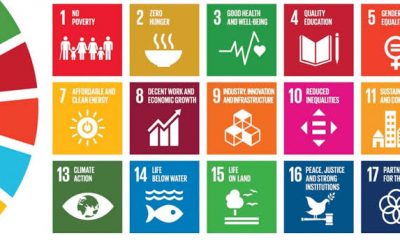
 Environmental3 years ago
Environmental3 years agoOPINION: AN ACCESSMENT OF NIGERIA’S PERFORMANCE IN THE OPTICS OF THE UN 17 SUSTAINABLE DEVELOPMENT GOALS AGENDA 2030. ( Periodic quaterly review & update — ( September ’22)
-

 Food Security3 years ago
Food Security3 years agoREALITIES OF LARGE SCALE INTEGRATED AGROPRENUERAIL FARMING AND FOOD PROCESSING BUSINESS IN NIGERIA. (Update)
-
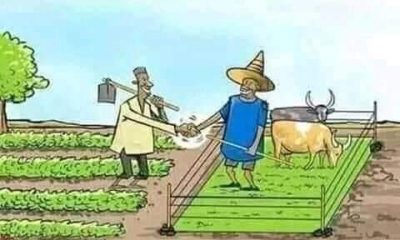
 Food Security3 years ago
Food Security3 years agoEXCITING FACTS ABOUT RANCHING
-

 Food Security3 years ago
Food Security3 years agoTOP SEVEN AGRICULTURAL COMMODITIES WITH HUGE UNTAPPED POTENTIALs – update
-

 Food Security3 years ago
Food Security3 years agoMITIGATING THE MENACE OF CLIMATE CHANGE THROUGH GREENBOND ISSUANCE.
-
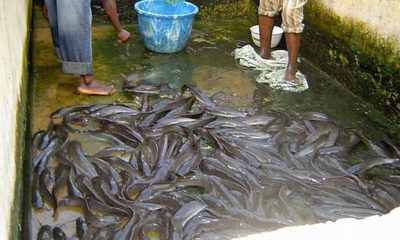
 Food Security3 years ago
Food Security3 years agoFISH PROCESSING TECHNOLOGY
-

 Food Security3 years ago
Food Security3 years agoTHE ROLE OF E -COMMERCE IN SYNERGISING AGRICULTURAL VALUE CHAIN DEVELOPMENT IN AFCTA IS SINE QUA-NON.
-

 Food Security3 years ago
Food Security3 years agoTHE IMPENDING GLOBAL FAMINE FROM THE PERSPECTIVES OF THE WORLD INSTITUTIONAL LEADERS.

